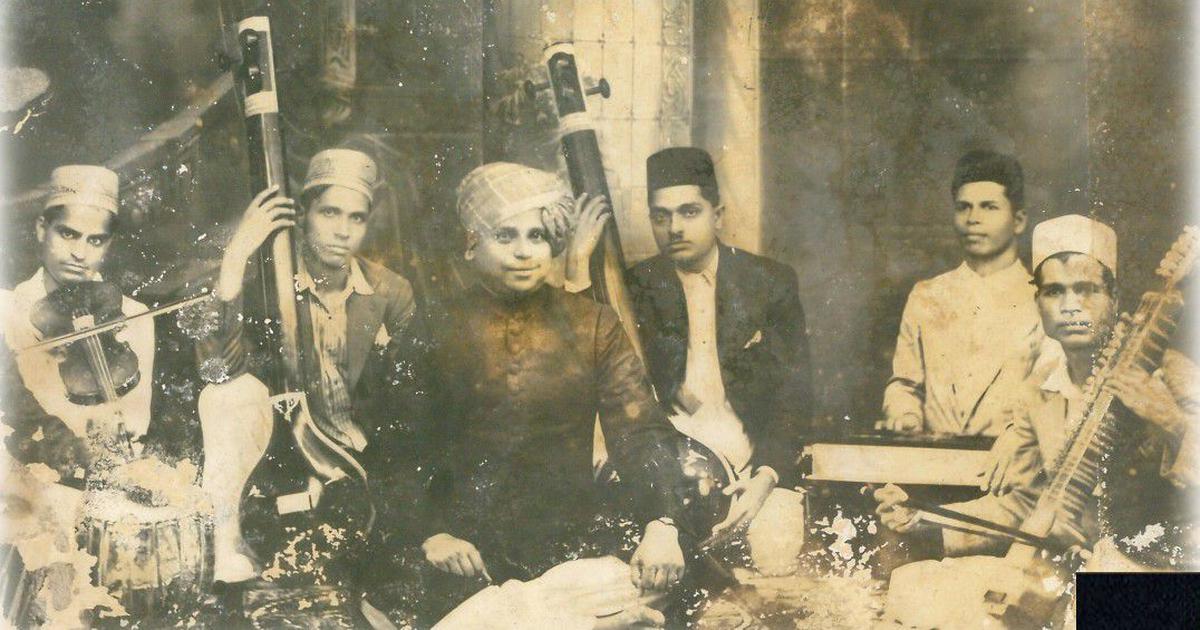
Pt. Narayanrao Vyas.
| Photo Credit: Special Arrangement
The book Gayanacharya Pandit Narayanrao Vyas Smriti Granth, a collection of essays by musicians, admirers, and family members, was recently released in Delhi. Compiled by the legendary vocalist’s son, Vidyadhar Vyas, and his music scholar-wife, Suneera Kasliwal Vyas, the volume highlights fascinating aspects of the Gwalior gharana stalwart’s life and artistry. The event was organised by the Vyas Academy of Indian Music, founded in 1937 by Pt. Narayanrao Vyas and his brother Pt. Shankarrao Vyas, and now run by Vidyadhar Vyas.
The Gwalior gharana ‘gayaki’ was developed by Ustad Nathan Peer Baksh in the late 18th century and was popularised by his grandsons Hassu Khan, Haddu Khan and Nathu Khan. Haddu Khan’s son, Ustad Rehimat Khan, was an extraordinary singer, who is said to have influenced Ustad Abdul Karim Khan — founder of the Kirana gharana — but he had no noteworthy disciples. He eventually left Gwalior. But the family’s legacy was kept alive by Nathu Khan’s son, Ustad Nissar Hussain Khan, who also left the Gwalior court during the reign of Madhavrao Scindia I (1886-1925) and stayed with his disciple Pt. Shankarrao Pandit, whose succeeding generations — Krishnarao Shankar Pandit, Lakshman Pandit and Meeta Pandit — have kept one stream of Gwalior gayaki alive.
Vidyadhar Vyas performing at the event.
| Photo Credit:
Special Arrangement
An amazing aspect of this gharana — considered the fountainhead of all others — is how it spread across regions. Several exponents of the Gwalior gayaki took dedicated efforts to popularise its style, making it one of the most sought-after gharanas among both learners and listeners. Even musicians associated with other gharanas often trace their roots to Gwalior gayaki. For instance, Ustad Inayat Khan, founder of the Rampur Sahaswan gharana was the son-in-law and disciple of Haddu Khan, so was Ustad Bande Ali Khan beenkar, associated with the Kirana gharana. Ustad Banne Khan, who moved to Punjab, was also a disciple of Haddu Khan.
The gayaki was introduced in Maharashtra by Pt. Balakrishna Buwa Chalkaranjikar of Miraj, disciple of Vasudeo Joshi, a shagird of Haddu Khan. He, in turn, trained many, including Vishnu Digambar Paluskar, guru of Pt. Narayanrao Vyas. So, today there are more singers from the Gwalior gharana in Maharashtra than in any other state.
Pt. Narayanrao Vyas was a vocalist whose approach and technique were far ahead of his time. Like his guru Vishnu Digambar Paluskar, Narayanrao used bhajans to popularise ragas. As one of the first musicians to embrace recording technology, Pt. Narayanrao Vyas gained wide acclaim for his three-minute records. In 1929, his recording of raag Adana was given a gold medal by the Gramophone Company for being the highest selling record. It was no small achievement. When Pt. Narayanrao Vyas was asked to restrict his recordings to just three minutes, he realised he needed to intelligently demonstrate all aspects of the Gwalior gayaki within that constraint. He requested a six-month period from the recording company to practise singing within the time limit. His goal was to aptly showcase the raga’s bhava, tayyari and laya control. And he did so successfully through sheer hard work.

Vocal jugalbandis, now a common feature in the world of classical music, were pioneered by Pt. Narayanrao Vyas.
| Photo Credit:
Courtesy: Vidyadhar Vyas
Pt. Narayanrao also believed classical music should not remain a niche art form and decided to sing for films and theatre. He composed music for films such as Ram Rajya (1943).
Vocal jugalbandis, now a common feature in the world of classical music, were pioneered by Pt. Narayanrao. The trend began when he performed with his guru-bhai, Pt. Vinayakrao Patwardhan, in Mumbai in 1960. The concert was a huge success. He was also known for his distinctive style of dressing — he wore a regal turban instead of a simple topi and well-tailored jackets.
The book, a tribute to a trailblazing musician, takes readers back in time through its articles and photographs. It traces the evolution of Gwalior gayaki and highlights its enduring appeal.
Published – October 15, 2025 06:37 pm IST
